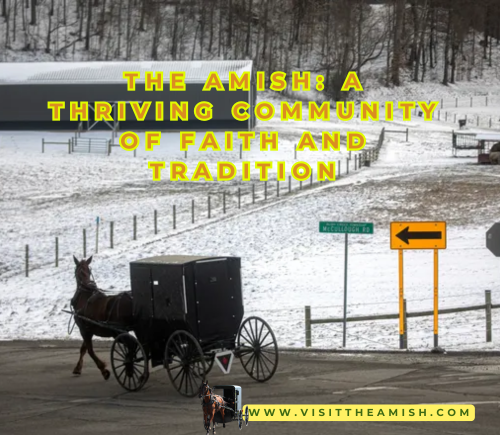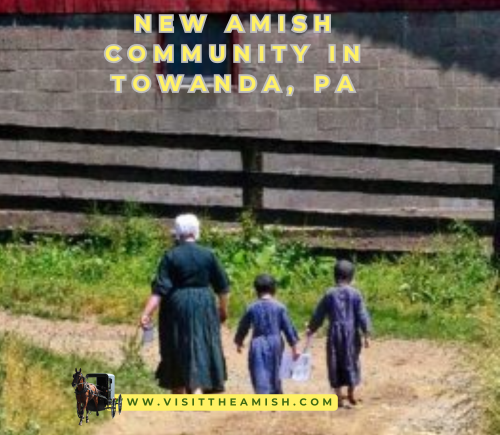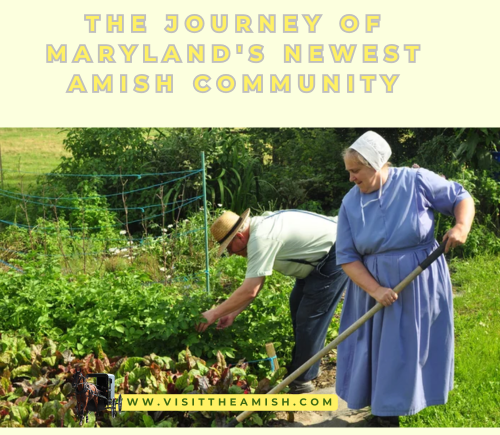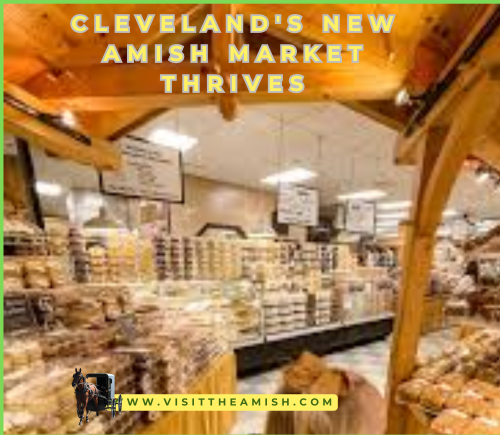New Amish Settlement Takes Root in Maryland’s Eastern Shore
In a picturesque corner of Maryland’s Eastern Shore, a new Amish community is quietly establishing itself, bringing with it a blend of traditional values and entrepreneurial spirit. The settlement, located near the town of Preston in Caroline County, has been steadily growing since its founding in late 2024. This unexpected migration of Amish families to the coastal plains of Maryland marks a significant expansion of the Amish presence in the state.
Jacob Stoltzfus, one of the first settlers to arrive in the area, explains the appeal of the region: “We were drawn to the fertile farmland and the opportunity to start fresh. The Eastern Shore reminds us of home, but with new possibilities.”
The community’s bishop, 52-year-old Eli Yoder, echoes this sentiment. “We’ve been welcomed by the local people, and we see great potential here for our families to thrive while maintaining our way of life,” Yoder said. Yoder and his extended family sold their farm in Lancaster County, Pennsylvania, to purchase a 300-acre property just outside Preston.
A Growing Community
What started as a small group of five families has now expanded to fifteen, with expectations of further growth. Stoltzfus anticipates the community will reach twenty to twenty-five families within the next few years. “We’re taking it slow, making sure we can sustain our lifestyle and our beliefs as we grow,” he explained.
The growth of this community is part of a larger trend. According to recent data, Maryland’s Amish population has increased by approximately 10% since 2023, with the new Preston settlement contributing significantly to this growth.
Economic Impact and Local Businesses
The arrival of the Amish has brought new economic activity to Caroline County. Several businesses have already been established, showcasing the community’s entrepreneurial spirit and work ethic.
Samuel Lapp owns and operates Preston Furniture, crafting custom pieces that have quickly gained popularity among locals and visitors alike. “Our furniture is made to last generations,” Lapp said. “We take pride in our craftsmanship and the quality of our work.”
Other businesses include a bakery run by Sarah Esh, whose pies and breads have become a local favorite. “I never thought my baking would be so popular,” Esh said with a shy smile. “It’s a blessing to share our food with our new neighbors.”
John Miller has set up a small dairy operation, producing artisanal cheeses that are sold at local farmers’ markets. “The land here is good for grazing, and we’re able to produce high-quality milk for our cheeses,” Miller explained.
Cultural Preservation and Adaptation
While embracing their new surroundings, the Preston Amish community remains committed to preserving their cultural traditions. They’ve established a one-room schoolhouse where children attend classes until the eighth grade, in keeping with Amish custom.
The community belongs to the Old Order Amish, maintaining traditional practices such as using horse-and-buggy transportation and eschewing electricity from public utilities. However, they’ve had to make some adaptations to their new environment.
“The climate here is a bit different from what we’re used to,” Yoder noted. “We’re learning new farming techniques suited to the soil and weather of the Eastern Shore.”
Community Relations and Local Reception
The arrival of the Amish has been met with curiosity and generally positive reception from local residents. Mary Thompson, a long-time Preston resident, shared her thoughts: “It’s been fascinating to watch the community grow. They’re hardworking folks, and their businesses are already contributing to our local economy.”
Tom Anderson, owner of a local hardware store, added, “The Amish have become good customers. They’re always polite and their business has been a welcome boost.”
Caroline County Commissioner John Doe expressed optimism about the new settlement: “We believe the Amish community will bring positive changes to our county. Their agricultural expertise and traditional crafts could become a significant draw for tourism.”
Challenges and Future Outlook
While the community is thriving, it’s not without its challenges. The transition to the Eastern Shore environment has required some adaptation. “We’re still learning about the best crops for this area and how to manage the soil,” Stoltzfus admitted. “But we’re making progress every day.”
As the community continues to grow, it may face challenges related to land use and infrastructure. However, the Amish are known for their resilience and problem-solving skills.
Looking to the future, Yoder remains optimistic: “We came here to build a sustainable community for our children and grandchildren. With God’s blessing and hard work, I believe we will succeed.”
The establishment of this Amish community in Maryland’s Eastern Shore represents a new chapter in the ongoing story of Amish migration and adaptation in the state. As they balance their traditional way of life with the demands of their new environment, the Preston Amish are writing a unique narrative of cultural preservation and rural revitalization.
Local officials are working closely with the Amish leaders to ensure smooth integration while respecting their cultural practices. This includes discussions about road safety for horse-drawn buggies and zoning considerations for Amish businesses.
The Preston Amish settlement is also attracting attention from other Amish communities. “We’ve had visitors from Pennsylvania and Ohio coming to see how we’re doing,” Stoltzfus said. “Some are considering joining us or starting their own settlements nearby.”
As the community grows, it’s likely to have a significant impact on the local economy and culture of Caroline County. The Amish businesses are not only serving their own community but are also becoming popular with tourists and locals alike, potentially boosting the area’s appeal as a destination for those interested in rural and cultural tourism.
The story of the Preston Amish settlement is still in its early chapters, but it’s already clear that this new community is weaving itself into the fabric of Maryland’s Eastern Shore, bringing with it a unique blend of tradition, entrepreneurship, and community spirit.
Citations:
- https://amishamerica.com/maryland-amish/
- https://gameo.org/index.php?title=Garrett_County_Old_Order_Amish_Settlement_%28Garrett_County%2C_Maryland%2C_USA%29
- https://www.amish365.com/where-are-the-amish-communities-in-maryland/
- https://boundarystones.weta.org/2012/11/01/southern-maryland-dutch-country
- https://ubalt.pressbooks.pub/contknowledge/chapter/amish-community-in-southern-maryland/
- https://theblackandwhite.net/72838/feature/we-work-outside-love-nature-and-work-for-god-an-inside-look-at-the-germantown-dutch-market/
- https://padutchmarket.com
- https://en.wikipedia.org/wiki/Amish_in_Maryland
- https://www.everythingamish.net/about
- https://eastonamishmarket.com
- https://www.tripadvisor.com/Attraction_Review-g53573-d1524370-Reviews-The_Amish_Village-Ronks_Lancaster_County_Pennsylvania.html
- https://www.tripadvisor.com/Attraction_Review-g53573-d1524370-Reviews-or10-The_Amish_Village-Ronks_Lancaster_County_Pennsylvania.html
- https://groups.etown.edu/amishstudies/statistics/population-2023/
- https://www.youtube.com/watch?v=xTn5phOd0so
- https://www.reddit.com/r/maryland/comments/156kmav/the_amish_are_out_early_this_beautiful_southern/
- https://mefc.org/content.cfm?id=151&blog_id=149
- https://www.pinterest.com/bingodottie3/amish-sayings/
- https://www.pinterest.com/becky17032/amish-sayings/
- https://wjla.com/news/local/local-market-becomes-asset-to-md-community
- https://thedeletedscenes.substack.com/p/not-pennsylvania-amish-country
- https://www.reddit.com/r/AskAnAmerican/comments/7ae294/people_who_live_near_amish_communities_what_are/
- https://www.businessinsider.com/amish-life-america-evolution-photos-2020-2
- https://amishamerica.com/category/business/
- https://ideaexchange.uakron.edu/cgi/viewcontent.cgi?article=1018&context=amishstudies
Like this:
Like Loading...











